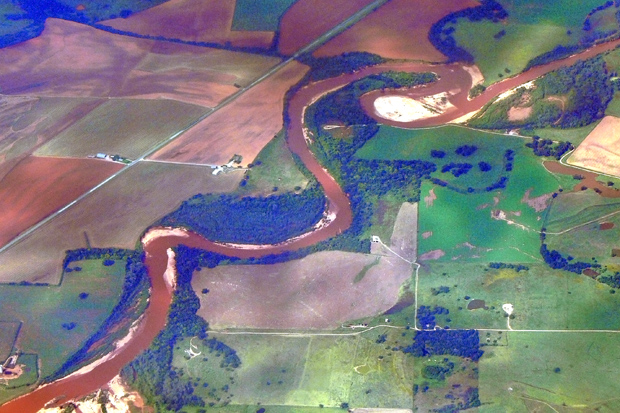
Legislature Adopts Resolution Asking U.S. Geological Survey for New Red River Study
-
Logan Layden
Water levels at Lake Texoma are way down, and for many reasons: Long-term drought near the Red River’s headwaters, increasing demand from rural and municipal water systems, hydroelectric power generation, even the buildup of silt on the lake bed.
At a public meeting in the small lake community of Kingston, Okla., March 15, StateImpact’s heard frustrated residents asking about exactly how much water was flowing into the lake, whether the water downstream from the lake could be used as a municipal water source instead, and exactly how much water is being lost to drought and each type of use.
Water consultant and geologist Bob Jackman’s response to the audience was, basically: There ought to be a study.
He was talking about Senate Concurrent Resolution 32, which is a request for a master study of the Red River Basin. The state Senate adopted the resolution March 17, and the House followed suit on Tuesday.
“We need a master multistate study of the Red River, from its very beginning below Hollis, Oklahoma, to where it goes into the Mississippi River,” Jackman told the audience. Jackman said he wants the U.S. Geological Survey to model exactly how the river’s flow is impacted by all levels of drought and rainfall.
The House Democratic Caucus in a news release says there hasn’t been a comprehensive study of the Red River since the 1970s and that “the purpose would be to calculate the quantity and quality of water flows along the entire upper, middle, and lower Red River and throughout the entire 65,590 square-mile watershed basin,” including in Arkansas and Louisiana.
Updating that data would … provide scientific answers to questions such as:
- Is surplus water available for transfer from the middle Red River basin area?
- If so, where, when, and in what quantities?
- What are the causes and effects of natural and man-made water pollution and salinity in the Red River?
- What are the current and future beneficial uses of surface and interconnected groundwaters in the four states in the rivers’ watershed basin?
The resolution isn’t binding, so the USGS won’t be required to do the requested study. The measure simply urges all the states in the basin to join Oklahoma in asking the federal government to do one.

